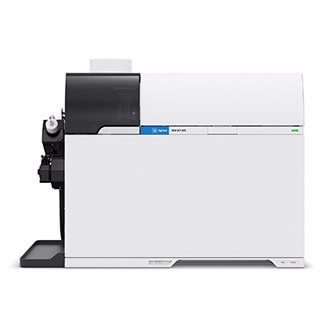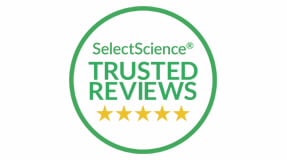
The Agilent 7850 ICP-MS
7850 ICP-MS
Check out how the Agilent 7850 ICP mass spectrometer boosts lab efficiency and helps reclaim wasted time throughout your ICP-MS analysis.
- ICP-MS Instruments
Product Details
- Standard operating procedures and fully developed methods for regulated and routine methods save you weeks of method development and documentation time.
- Ultra High Matrix Introduction (UHMI) reduces sample preparation time by allowing you to directly analyze samples containing up to 25% total dissolved solids without dilution.
- Helium collision cell and half-mass correction remove troublesome polyatomic and doubly-charged interferences that can reduce data quality and increase the need for costly sample remeasurements.
- Robust hardware allows you to measure high matrix samples without having to matrix-match calibration standards.
- IntelliQuant gives you a complete elemental profile of each sample, helping you to easily identify unusual sample matrices.
- Outlier Conditional Formatting (OCF) reduces data review times for busy or inexperienced ICP-MS operators by highlighting results that are outside a nominated range or have failed a test requirement.
- Early Maintenance Feedback (EMF) uses sensors and counters to determine when maintenance is needed. Traffic light, color-coded alerts means maintenance tasks are never missed but are also not performed more frequently than necessary.
- ICP Go is an optional, browser-based user-interface for mobile devices offering simplified set up and control of routine sample batches and is great for ICP-MS operators on the move.
- Method-specific Analyzer packages containing ICP-MS hardware, software, consumables, professional services and documentation ensure you’ll be running samples in weeks, instead of the months it can take to develop, optimize, verify and document a regulated method.
Optimize Your ICP-MS Performance with Cone Insights
Understanding ICP-MS cone technology is key to maintaining instrument performance and data quality. This FAQ explains cone function, selection, and care—helping you make informed decisions to support consistent, reliable analysis. Discover how Cone Insights can elevate your ICP-MS workflow.
Learn More- Key Literature
-
The Agilent 7850 ICP-MS
This brochure describes how the 7850 ICP-MS will free your analytical workflow from common time traps.
- Brochures
- English
- 20 May 2024
- 3.70 MB
Productive Analysis of High Matrix Samples using ICP-MS with Advanced Dilution System
Autodilution of sediments and soils by Agilent ADS 2 before analysis by Agilent 7850 ICP-MS
- Application Notes
- English
- 01 Apr 2024
- 909.62 KB
Free your ICP-MS Workflow From Common Time Traps
A brief overview of the Agilent 7850 ICP-MS instrument
- Flyers
- English
- 29 Oct 2020
- 554.71 KB
- Application Notes
- Brochures
- Flyers
- Newsletters
- Primers
- White Papers
- FAQs
-
ICP-MS Overview
An introduction to the ICP-MS technique and instruments. Find out how ICP-MS works, what samples can be analyzed, and much more.
- User Manuals
Didn't find what you need? Contact our support teams.
Atomic Spectroscopy support contact information
GFAAS vs ICP-MS vs ICP-OES
Which technique is the best fit for your needs? Compare Graphite Furnace AAS, ICP-MS and ICP-OES.
GFAAS vs ICP-MS
Which technique is the best fit for your needs? Compare Graphite Furnace AAS and ICP-MS.
ICP-MS vs ICP-QQQ
Which technique is the best fit for your needs? Compare single quadrupole and triple quadrupole ICP-MS.
Read Reviews of the 7850 ICP-MS
Explore customer reviews posted on SelectScience, or write your own review.
Essential Supplies Guide for Agilent ICP-MS Instruments
Discover the right supplies for your instrument to achieve peak performance and optimize your ICP-MS workflow
Videos
ICP-MS Interface Cones FAQs Now Available!
Interface cones play a vital role in ICP-MS performance—they directly impact sensitivity, stability, and long-term system reliability. Understanding how to select, maintain, and optimize cones is key to getting the best results from your instrument. Explore the new ICP-MS Interface Cones FAQs by Agilent experts and take your knowledge to the next level!
- 14 Aug 2025


